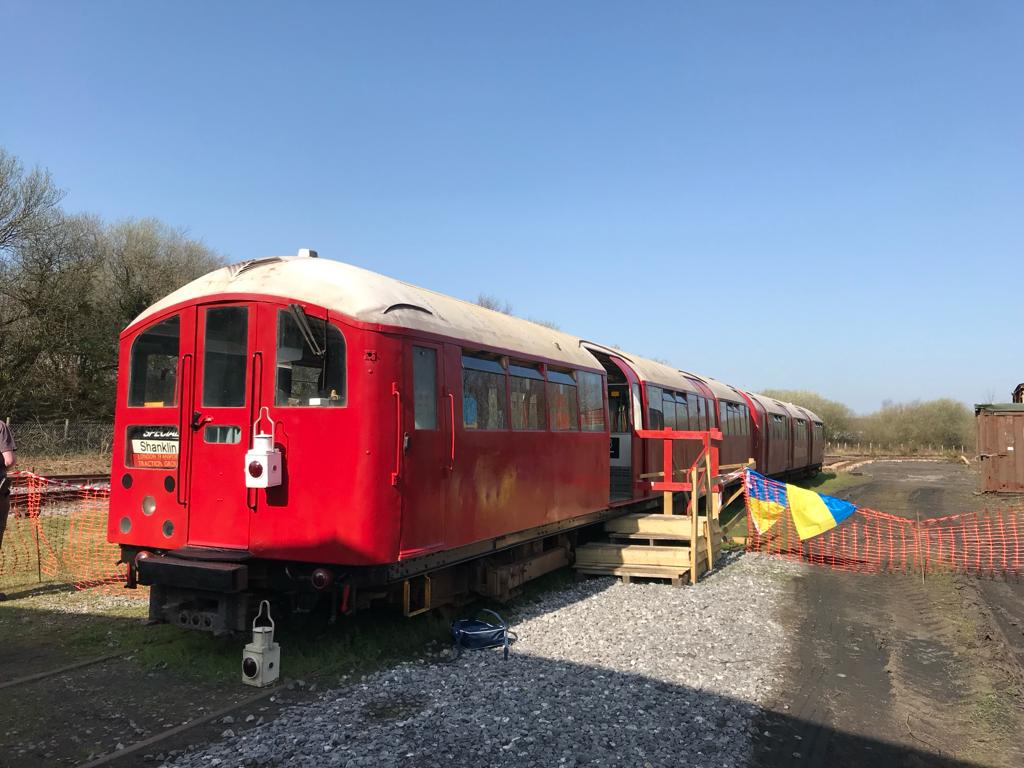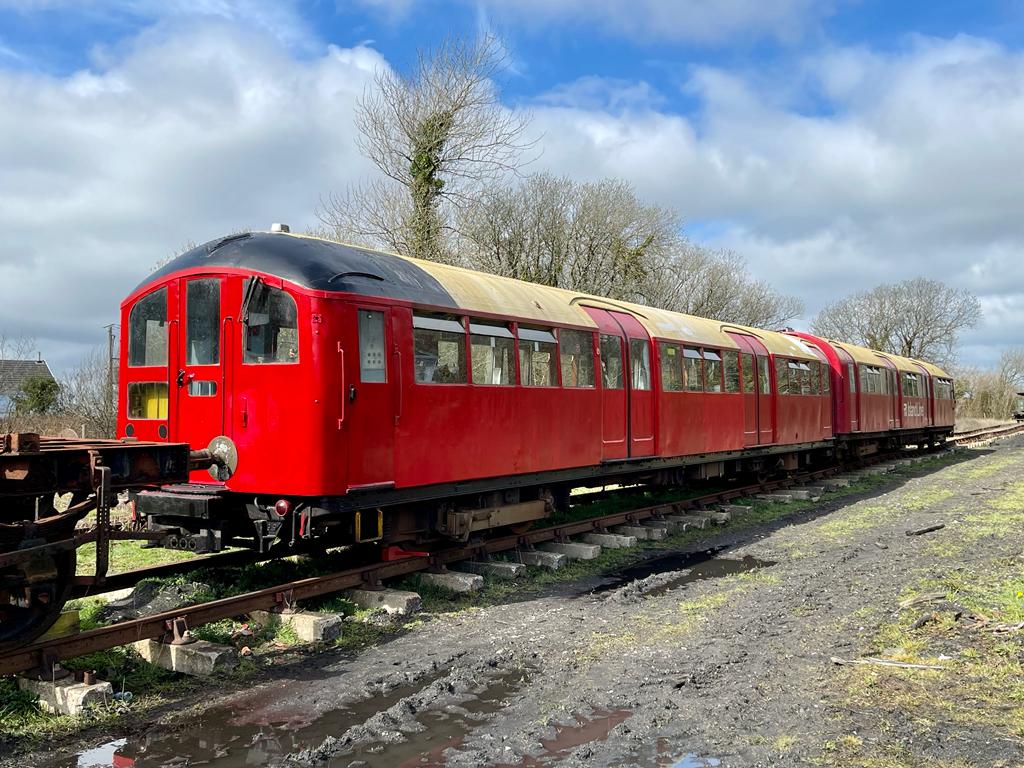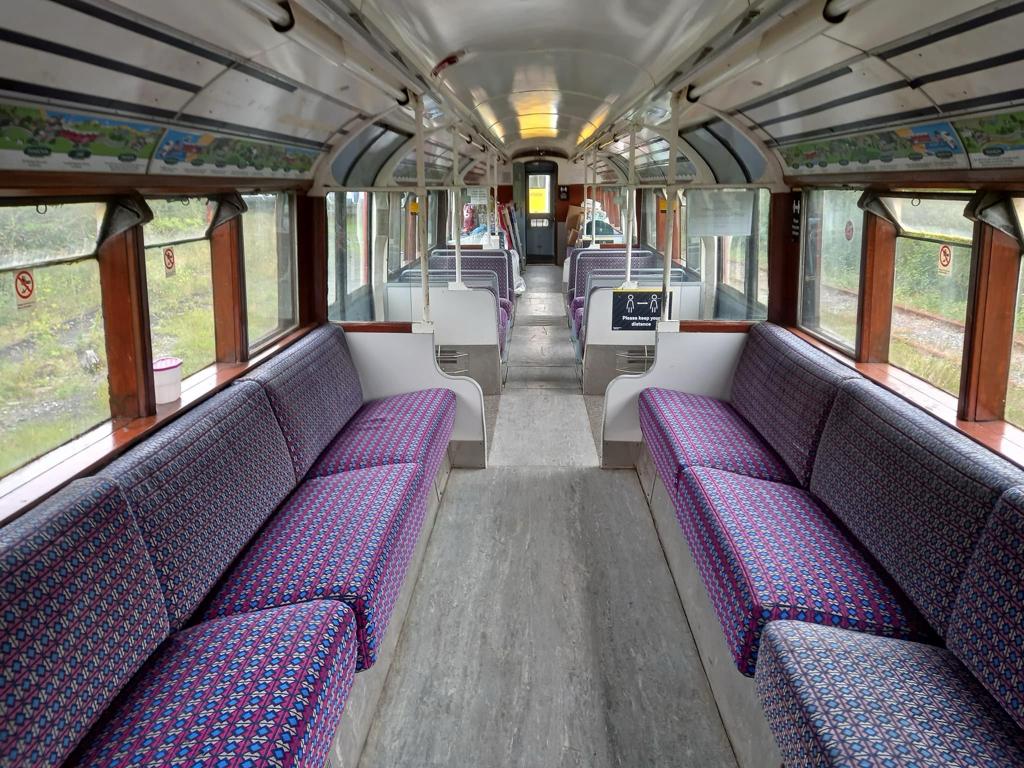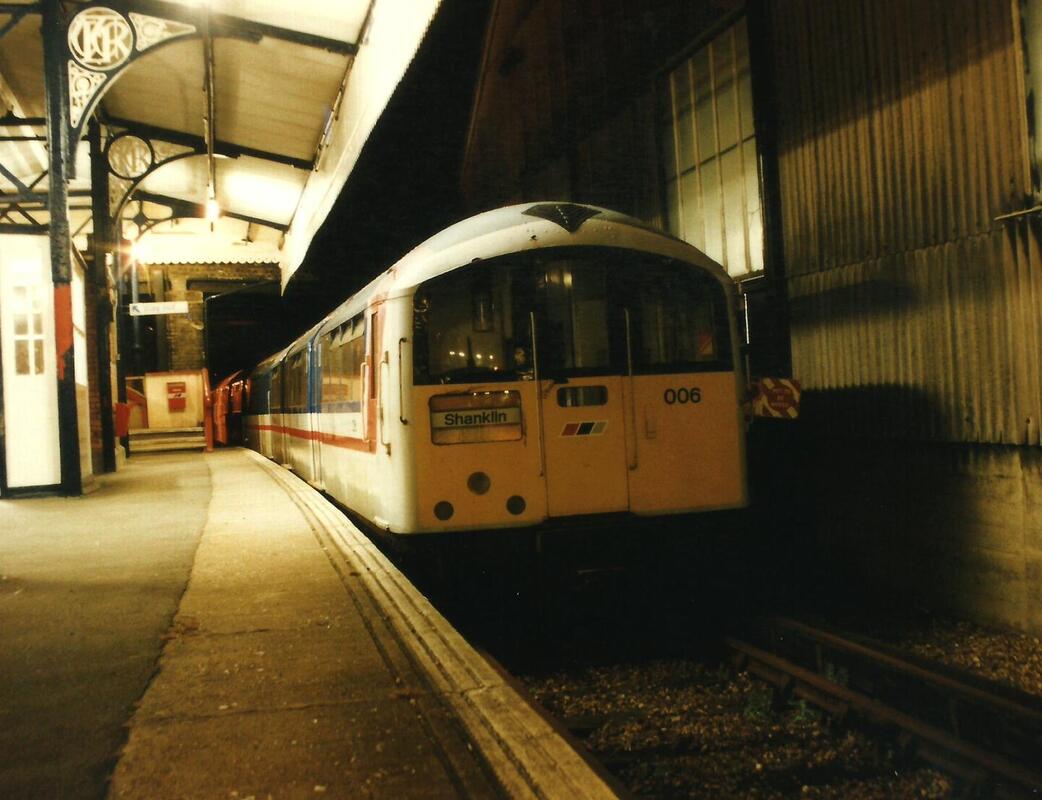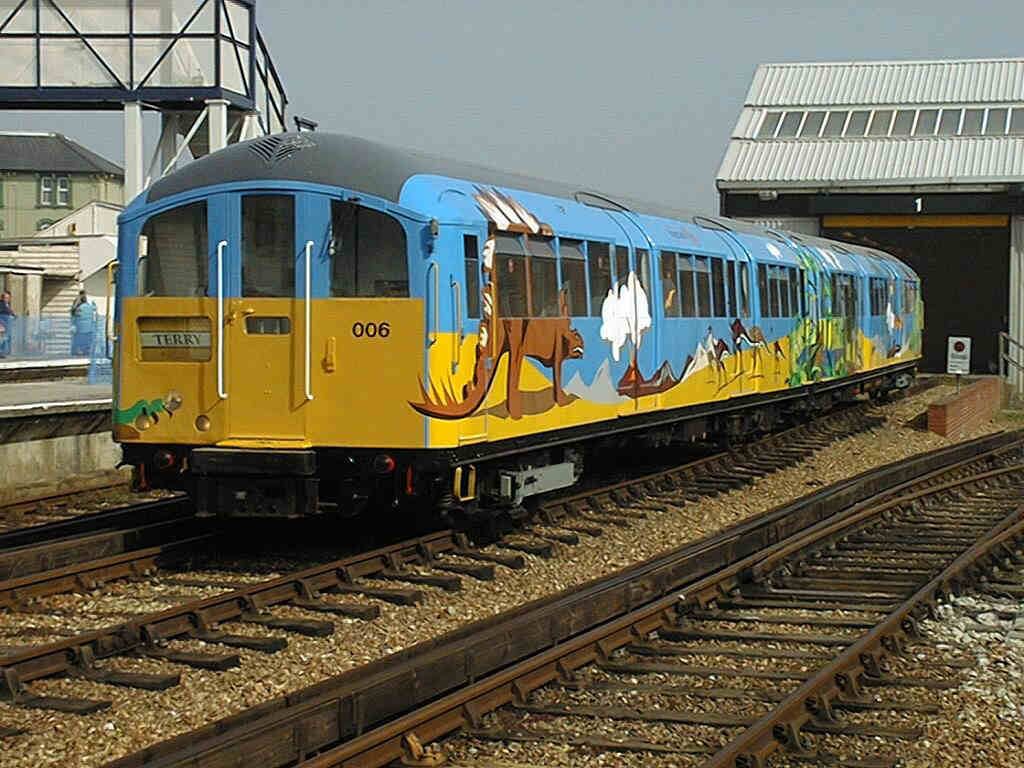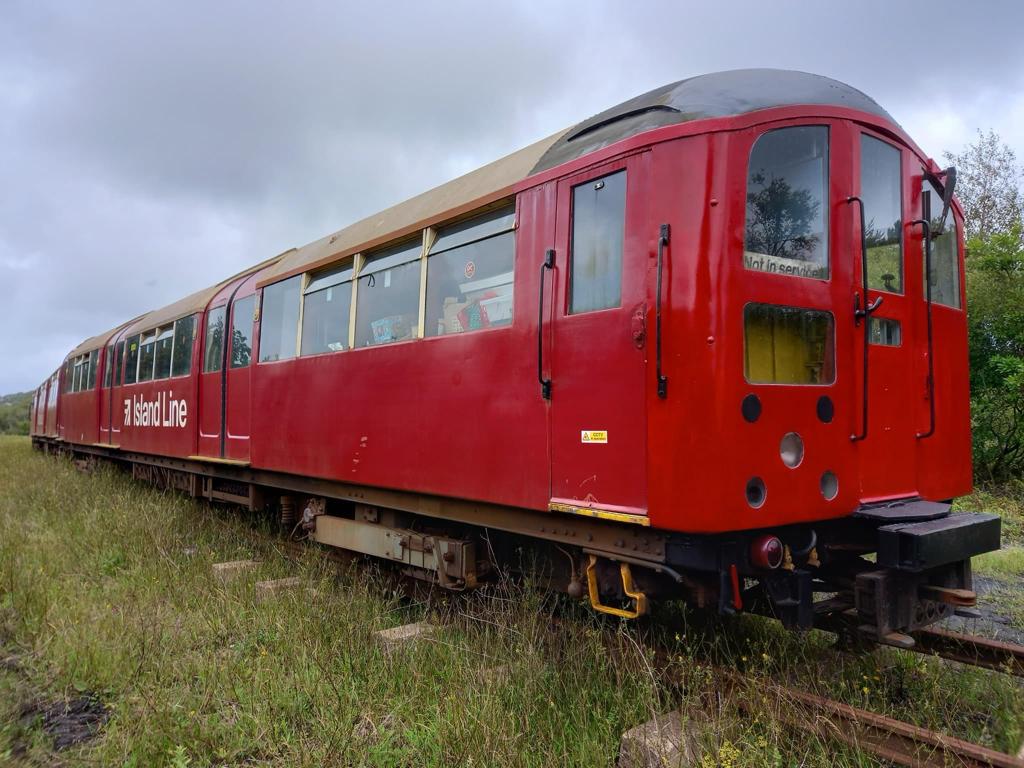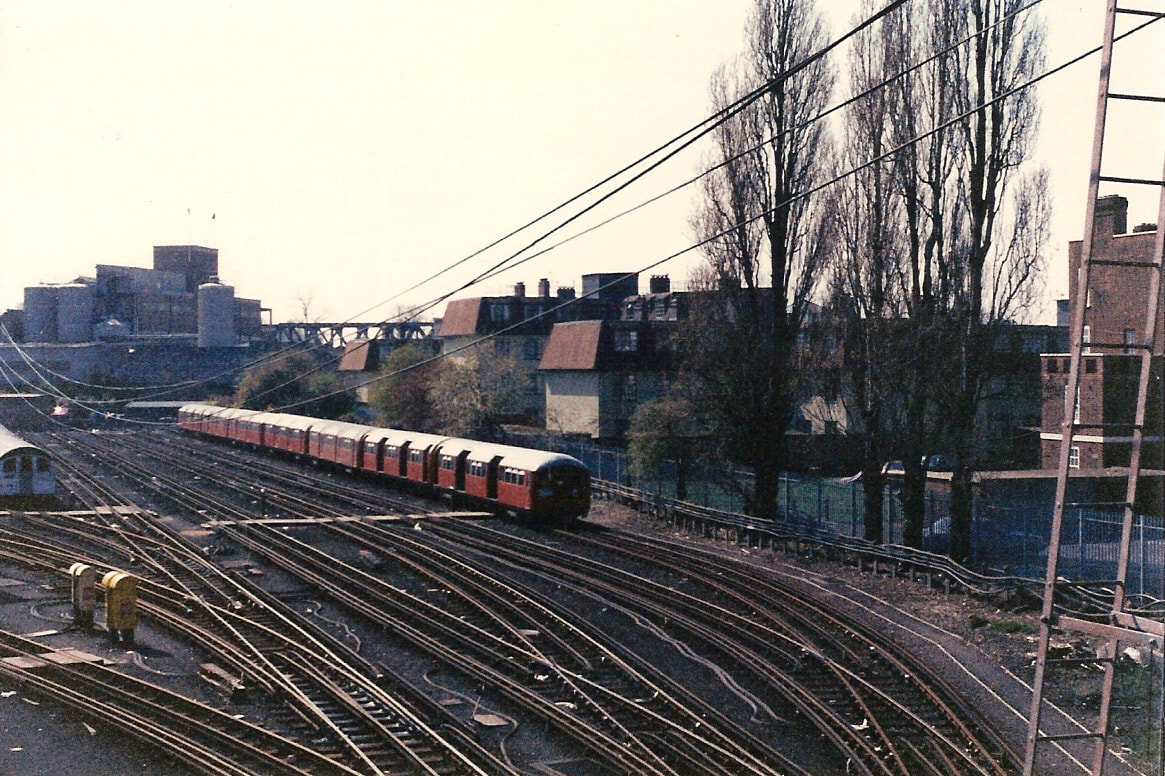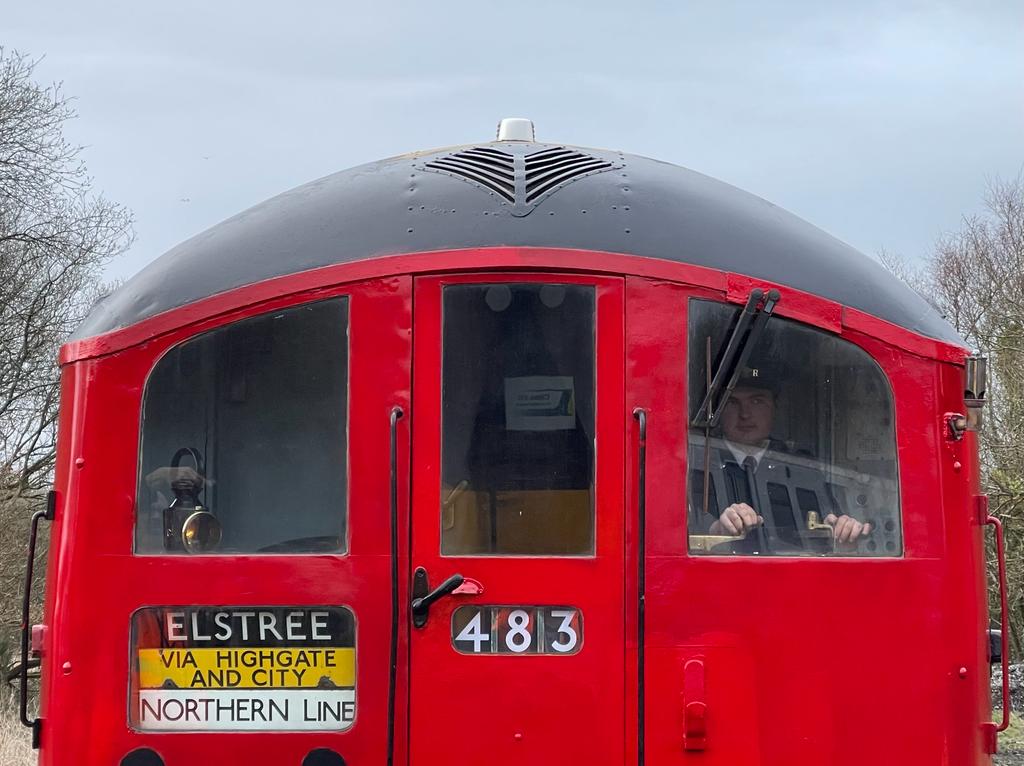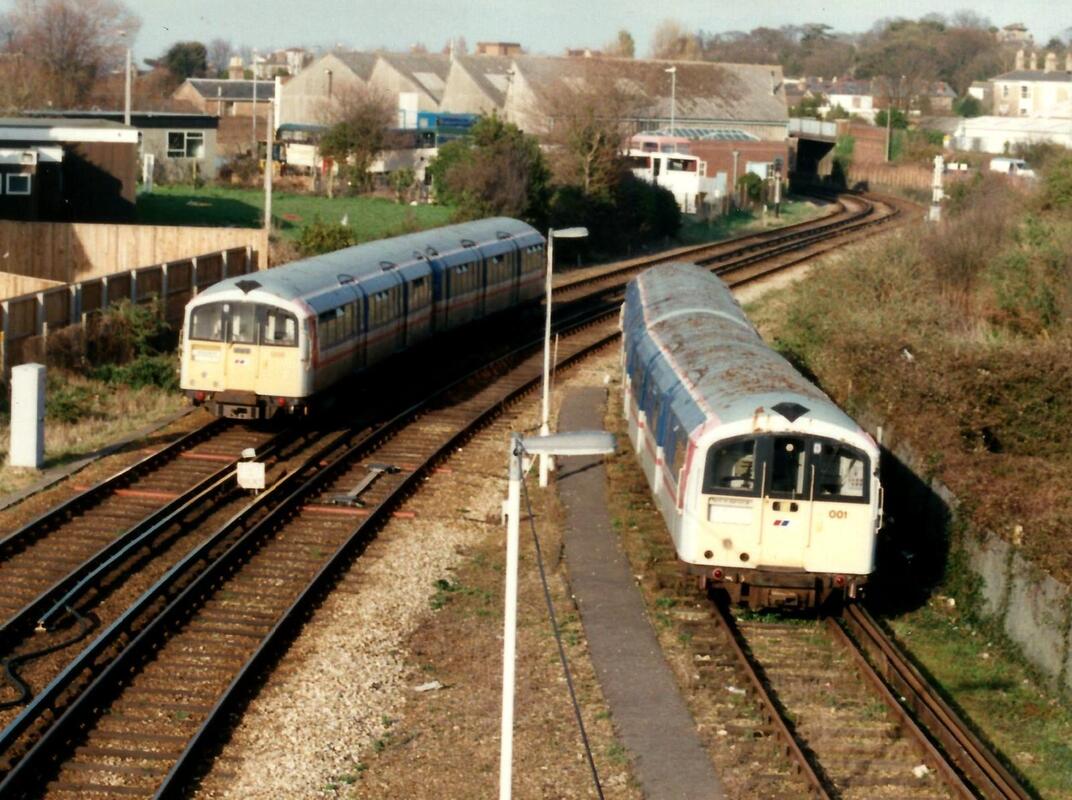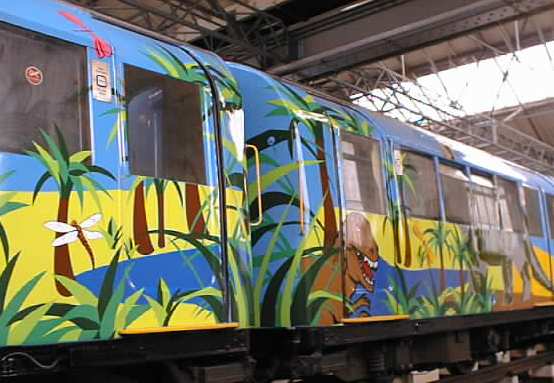|
Built by Metro-Cammell and delivered to London Transport on 1st July 1940, shortly before the start of the Battle of Britain, the two vehicles of 1938 Tube Stock which we now know as 483006 were initially placed into storage.
Driving Motor (DM) cars 10297 and 11297, today numbered 126 and 226 (forming 483006), were formed as two ends of a four-car set which also contained Trailer (T) car 012378 and Non-Driving Motor (NDM) car 12048. Although proudly carrying gold 'London Transport' fleet-names on their sides, these vehicles were actually owned by the London & North Eastern Railway as part of an agreement between the two companies which saw LT's Northern and Central line services extended over the L&NER's suburban lines to the North and East of London. |
|
The unit remained at White City until August 1985, when it was moved to Ruislip Depot. Officially the move was to see the unit scrapped, but there were other plans for this and the other 1938 Stock vehicles stored with it.
Following the retirement of Operating Manager John Cope in 1986, our unit and nine other sets of 1938 Stock were overhauled at Ruislip and outshopped in an interpretation of their original 'Train Red' livery to help cover a rolling stock shortage on the Northern Line. The overhauled trains entered service in October 1986 and were only ever intended to act as a temporary solution. 10297 and 11297 were to have their service cut short again, being withdrawn in November 1987 with a serious mechanical fault. Following withdrawal, 10297, 012378, 12048 and 11297 languished for another year with 10205, 012292 and 11205 at Morden Depot. In February 1988 NDM 12048 was swapped with 12027 (previously running with 10012, 012256 and 11012) and has subsequently been preserved as part of the London Transport Museum's 4-Car 1938 stock train.
1988 saw the final end of regular 1938 Stock operations on the London Underground, and in October of that year 10297, 012378, 12027, 11297, 10205, 012292 and 11205 were moved by battery locomotives to Ruislip depot to await their fate, being unable to make the move under their own power after a year of storage and cannibalisation. By this time 10297 and 11297 had already been withdrawn twice, and with 1938 Stock having had its last hurrah on the Underground it seemed possible that the cars would be scrapped. After a month in storage at Ruislip, the cars were moved once more together with Ballast Motor L149. This time the destination was British Rail's Strawberry Hill Depot and another story was about to begin. Now in BR's hands, 10297 and 11297 were separated from their T and NDM cars before being moved to Eastleigh Works on 28th April 1989. At Eastleigh Works the vehicles were comprehensively rebuilt to allow them to operate as two-car units, rather than four-car as previously, and to draw current from BR Southern's Third Rail system rather than LT's Fourth Rail system. As well as these basic operational alterations, a plethora of other alterations were made to the vehicles including... Arriving at Ryde Depot on 21st June, 006 entered service on 13th July 1990, a little over 50 years after delivery to London Transport. In June 1995 two seats were removed from 126 and replaced by a locker for the use of the guard and in the early-2000s the brake controllers were replaced with items removed from withdrawn 1959 Tube Stock cars, but otherwise the unit has remained largely unchanged since 1990.
The next change would come on 21st March 2000, when 483006 emerged from Ryde Depot in a cloud of red smoke sporting a bold new livery and a name! Named 'Terry' (derived, dubiously, from Pterodactyl), 006 was now painted in a bright yellow and blue livery covered with vinyl-printed artwork featuring various Dinosaurs. However controversial the new livery was, it was not the greatest trouble encountered by 006 in 2000. On 10th October Ryde Depot was hit by severe flooding which damaged 006 sufficiently as to see it withdrawn from traffic until 3rd December that year.
More to follow soon, bringing our history of 483006 up to date! If you would like to know more about the LTTG's plans for 483006, please click the link below to take you to our Project 483 page. |
10297 and 11297 spent over 18 months in storage whilst in the skies above the Luftwaffe perpetuated the London Blitz, but eventually they entered Northern Line service on 21st February 1942. An uneventful service life followed, with the cars moving to the Bakerloo Line in time to be amongst the 38 sets of 1938 Stock selected for the Extra Heavy Overhaul (EHO) in the early-mid 1970s. The EHO programme coincided with the introduction of a new 'Bus Red' livery for the 1938 Stock fleet, to economise on paint costs.
The unit was destined to have its Bakerloo service cut short in 1981, four years before the end of 1938 Stock operations on the line, when it was withdrawn and moved with unit 10205 (now partially preserved as 483004) to White City depot on the Central Line to act as a training train.
483006's first test runs were undertaken on 17th May 1990 between Eastleigh and Winchester, with the unit running to Fratton on 16th June. On 19th June it set sail across the Solent to begin a new life on the Isle of Wight, where it was to remain for more than 30 years. Island Line had been run as a private franchise since the privatisation of British Rail in the mid-1990s, but until this date the Class 483 fleet had remained in their Network Southeast liveries.
The new dinosaur-themed livery was certainly a controversial choice, but 006 was just the first to carry it. 483004 was second, followed later by 483002, 008 and 009. 483001, 003 and 005 had been withdrawn already and 483007 was to be painted in a special interpretation of London Transport 'Train Red'. The dinosaur livery does not appear to have aged terribly well, and by 2009 all of the Class 483s had join 007 in a version of LT red. |

